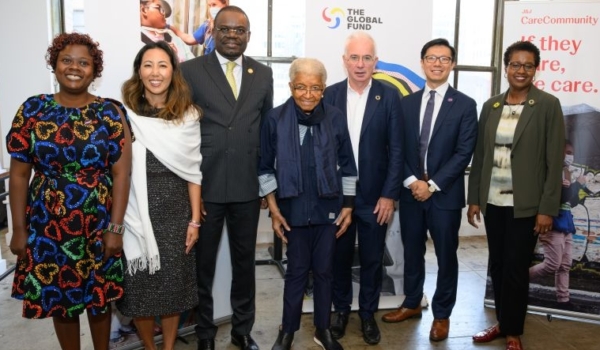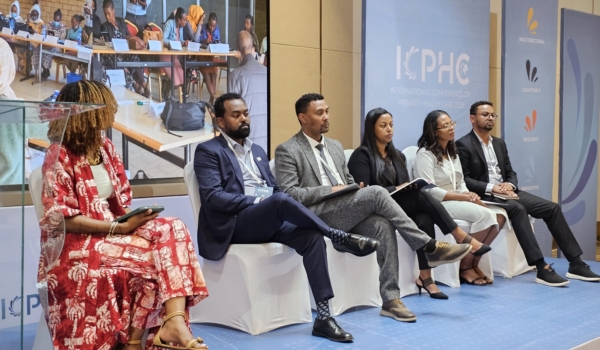On October 28, 2020, T. Ruston Yarnko, Last Mile Health’s Director of National Community Health Systems in Liberia, shared the following remarks on the Women in Global Health and Johnson & Johnson Center for Health Worker Innovation webinar on women’s unpaid care work globally.
Thank you for the opportunity to join today, and to share Liberia’s experience in investing in paid community health workers.
So before the Ebola outbreak, there were fragmented community health programs with community health volunteers who were receiving little to no pay. But following the outbreak, partners like Last Mile Health engaged with the Government of Liberia to make the case on why it was important to pay community health workers, based on lessons learned from the Ebola outbreak and based on the community health workers’ impact during the outbreak.
For different stakeholders, there were different arguments to be made. So, when engaging folks from the health sector, the argument was most centered around how community health workers were proven to equitably and efficiently deliver health services, especially at the primary healthcare level.
When making the case at the Ministry of Finance or with financial stakeholders, it was more about the return on investment. We made a case that for every $1 invested in community health workers, you get $10 back due to increased productivity, reduced risk of epidemics, and increased employment opportunities, particularly for women and young people.
When speaking with people from the donor sector, it was more about equity. How can we ensure that we have these community health workers paid for what they do? So if I am sitting in an office and am expected to be paid for the work I do, then what about a community health worker who has to work for hours to provide desperately needed services for people in distant and rural communities?
So after building this argument, the Government of Liberia decided to move forward with revising the National Community Health Assistant policy based on five key principles: recruit, train, supervise, equip, and pay community health workers.
When these community health workers were deployed in these remote communities, that decision has started to yield proof. That includes three million patient visits being now conducted, and over one million cases of childhood illnesses being treated. Besides that, this investment has also led community health workers in supporting the current COVID-19 fight.
Despite all these improvements, we still have some challenges as we approach the revision of —the national policy. We recognize that there has been this issue of gender parity—only 20% of community health workers in Liberia are female. Now as we move towards revising the community health program, we are now developing strategies to reduce barriers that prevent women from becoming community health workers. For example, how can we remove the requirement of having motorcycle skill training before becoming a community health worker, and move it to a capacity building effort? So when these women become community health workers, they have the opportunity of building the capacity to develop motorcycle riding skills, in addition to being a community health worker. Another example comes from a recent study conducted on Sayana Press in Rivercess Liberia underscored this need to have more female community health workers. The study shows that female community health workers deliver more contraceptive services to other women, compared to their male counterparts.
So the issue of gender mainstreaming has been really central to the community program, and as a male—within this male-dominated world—I think the pressure is on us to support women to be able to achieve their overall outcome. With that, I think it is important that we ensure that women are paid for the work they do.





